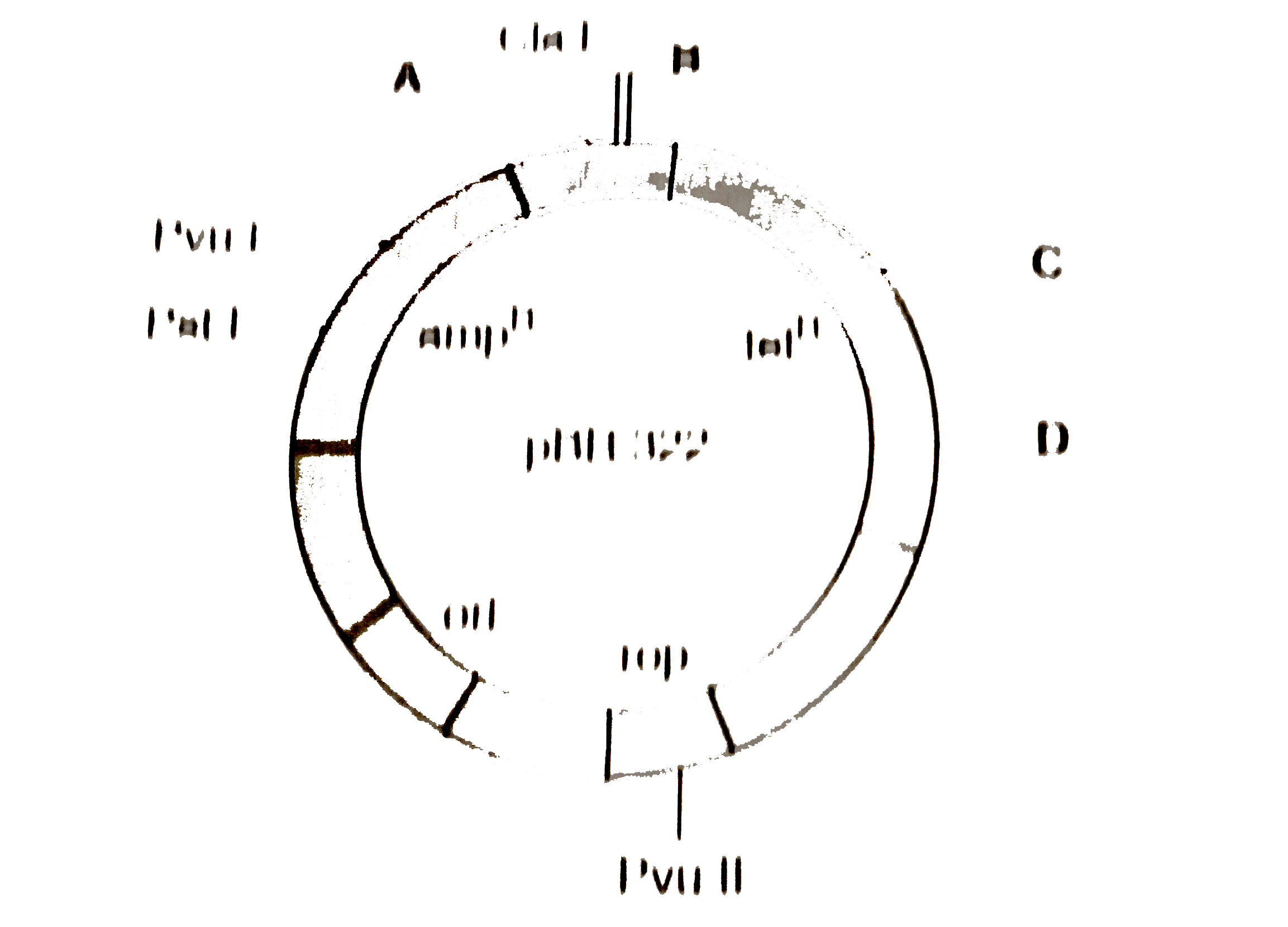An antibiotic resistant gene in a vector usually helps in the selection of
competent cells
transformed cells
recombinant cells
none of the above
The correct Answer is:B
Step-by-Step Solution:
1. Understanding the Role of Antibiotic Resistant Genes:
- Antibiotic resistant genes are often included in vectors (like plasmids) used in genetic engineering. These genes allow for the selection of cells that have successfully taken up the vector.
2. Identifying the Options:
- The question provides four options:
a) Competent cells
b) Transformed cells
c) Recombinant cells
d) None of the above
3. Analyzing Each Option:
- Competent Cells: These are cells that are capable of taking up foreign DNA. They are not selected by antibiotic resistance; rather, they are prepared to undergo transformation. Thus, this option is incorrect.
- Transformed Cells: These are cells that have successfully incorporated the foreign DNA (the vector with the antibiotic resistance gene). The presence of the antibiotic resistance gene allows for the selection of these cells when they are grown in the presence of the antibiotic. This option is correct.
- Recombinant Cells: These cells contain both the host DNA and the foreign DNA. While the antibiotic resistance gene is part of the vector used to create recombinant DNA, it does not directly help in selecting recombinant cells. This option is incorrect.
- None of the Above: Since option B is correct, this option is also incorrect.
4. Conclusion:
- The antibiotic resistant gene in a vector primarily helps in the selection of transformed cells. Therefore, the correct answer is option B.
- Antibiotic resistant genes are often included in vectors (like plasmids) used in genetic engineering. These genes allow for the selection of cells that have successfully taken up the vector.
- The question provides four options:
a) Competent cells
b) Transformed cells
c) Recombinant cells
d) None of the above
- Competent Cells: These are cells that are capable of taking up foreign DNA. They are not selected by antibiotic resistance; rather, they are prepared to undergo transformation. Thus, this option is incorrect.
- Transformed Cells: These are cells that have successfully incorporated the foreign DNA (the vector with the antibiotic resistance gene). The presence of the antibiotic resistance gene allows for the selection of these cells when they are grown in the presence of the antibiotic. This option is correct.
- Recombinant Cells: These cells contain both the host DNA and the foreign DNA. While the antibiotic resistance gene is part of the vector used to create recombinant DNA, it does not directly help in selecting recombinant cells. This option is incorrect.
- None of the Above: Since option B is correct, this option is also incorrect.
- The antibiotic resistant gene in a vector primarily helps in the selection of transformed cells. Therefore, the correct answer is option B.
Topper's Solved these Questions
Similar Questions
Knowledge Check
An antibiotic resistance gene in a vector usually helps in the selection of :
ACompetent cellsBTransformed cellsCRecombinant cellsDNone of the abobeAn antibiotic resistance gene in a vector usually helps in the selection of :
Aa) competent cellsBb) transformed cellsCc) recombinant cellsDd)none of the aboveAn antibiotic resistance gene in a vector usually helps in the selection of :
Aa) competent cellsBb) transformed cellsCc) recombinant cellsDd)none of the above
Herbicide resistant gene is
View SolutionAn antibiotic resistance gene of plasmid vector which get inactivated due to insertion of alien DNA helps in the selection of
View SolutionAn antibiotic resistance gene of plasmid vector which get inactivated due to insertion of alien DNA, helps in the selection of
View SolutionE. coli cloning vector pBR322 showing restriction sites ori and antibiotic resistance genes is given below. Select the correct option .

View SolutionWhat could be the possible harm of using antibiotic resistant gene as a selectable marker in plasmid, used for gene transfer in production of GM food?
(A) GM food contains the enzyme produced by the antibiotic resistance gene that was used during gene tranfer in genetic engineering. This could cause allergies since it is a foreign protein.
(B) The bacteria present in the alimentary canal of the humans could take up the antibiotic resistance gene present in GM food.
(C) The bacteria in the human alimentary canal would then become resistant to the concerned antibiotic.
(D) The transgene may be transferred through pollen to their wild relattves and make weeds more persistant and damaging.
View Solution

